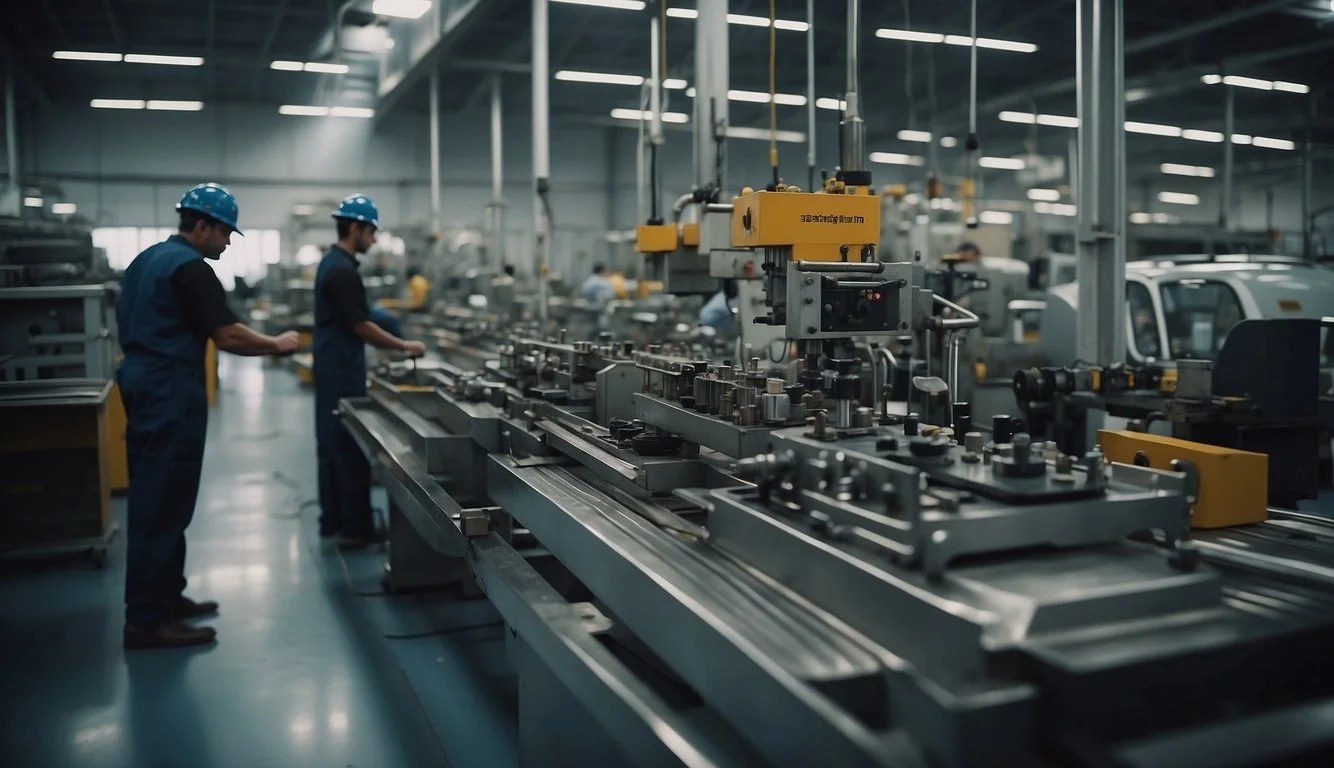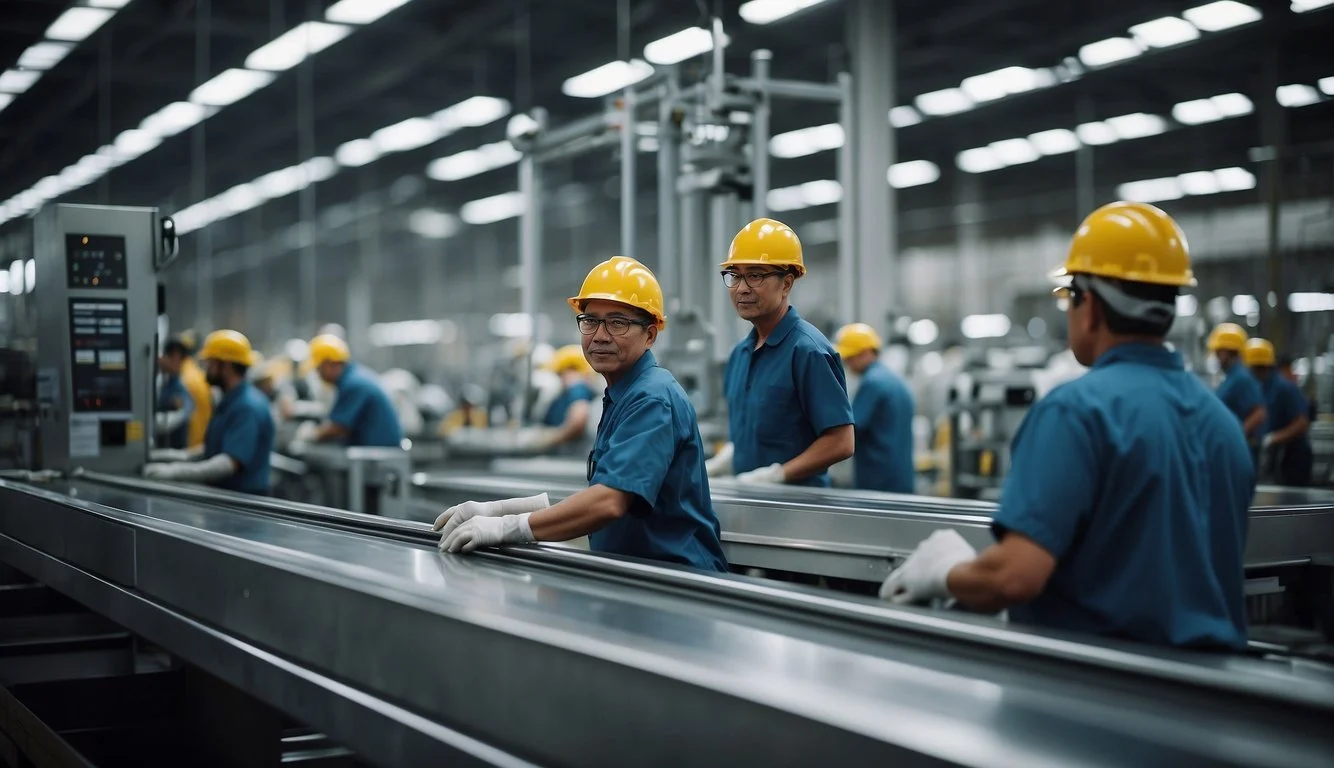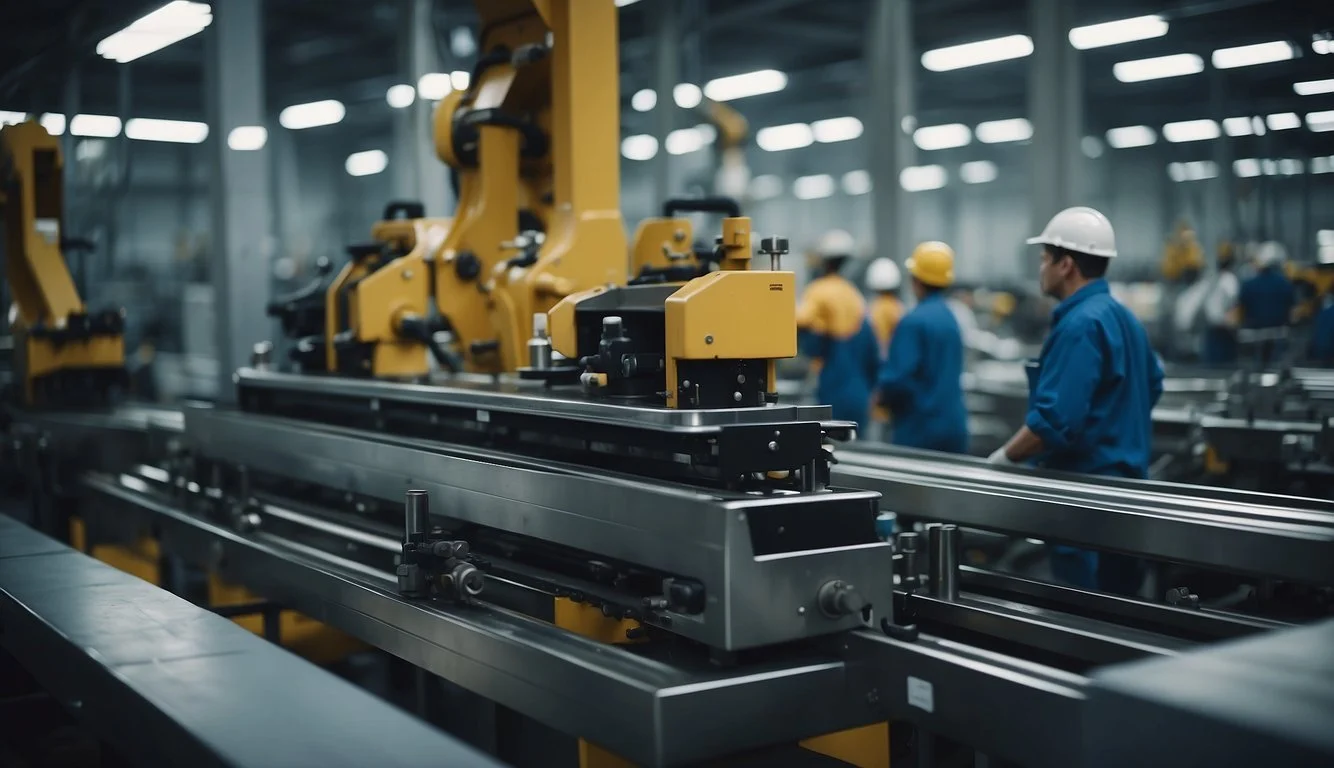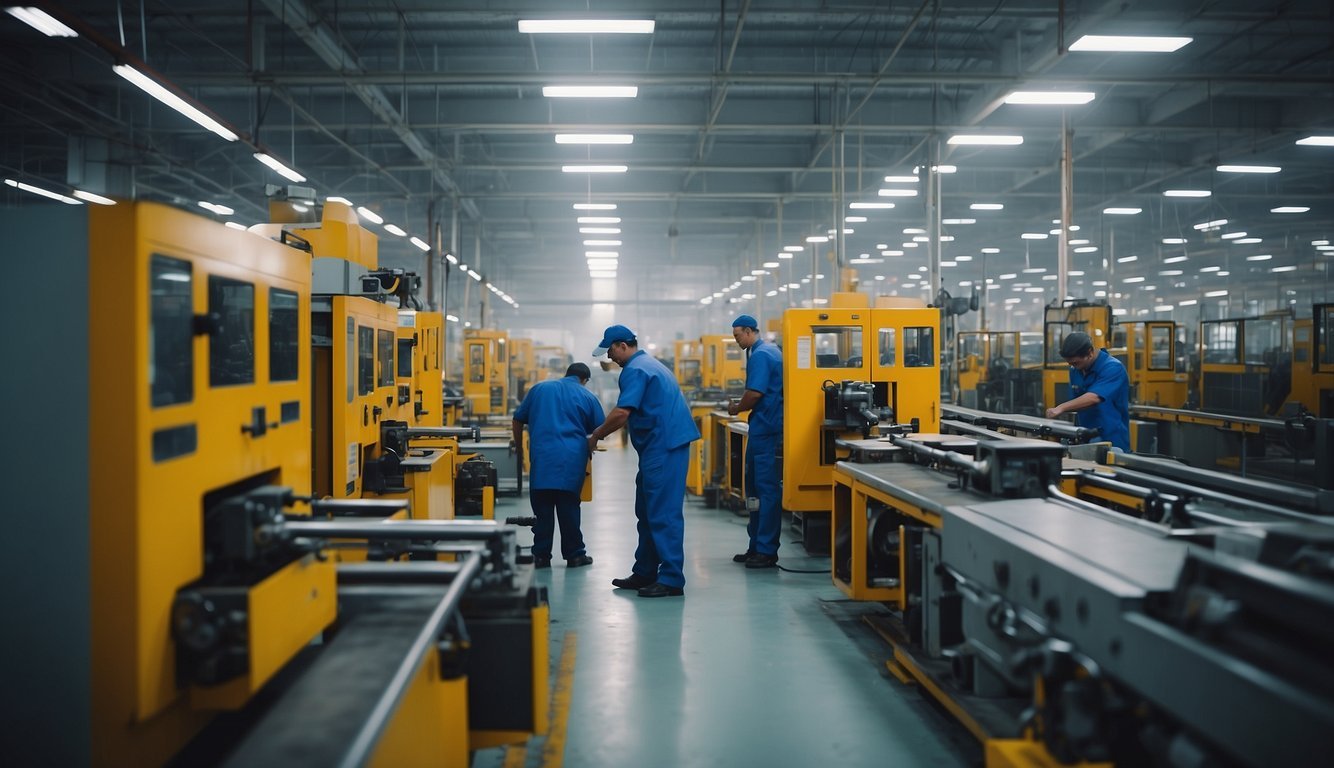Documentary Review: American Factory (2019)
A Clash of Cultures and Economies
In the 2019 documentary "American Factory," filmmakers Steven Bognar and Julia Reichert capture the intersection of American and Chinese work cultures at an old General Motors plant in Dayton, Ohio. The factory, revived in 2014 by Chinese billionaire Cao Dewang, becomes a Fuyao Glass America facility, aiming to meld two different industrial philosophies. This meeting results in a vivid narrative about labor, management, and cultural expectations.
"American Factory" stands out for its unfiltered portrayal of real-life tensions and challenges faced by workers and management alike. American employees and Chinese supervisors navigate this new landscape with varying degrees of success and conflict, highlighting the complexities of globalization.
The documentary doesn't just show a workplace revival; it examines broader themes of economic disparity and cultural collision. With intimate interviews and dynamic visuals, Bognar and Reichert provide a clear-eyed view of the evolving industrial world, offering viewers a compelling look at modern labor issues.
Overview of 'American Factory'
"American Factory" provides an in-depth look at the reopening of a shuttered General Motors plant by a Chinese company, exploring the cultural and economic tensions that arise. The documentary captures the challenges faced by both American and Chinese workers as they navigate differing workplace expectations and management styles.
Background Information
In 2014, Cao Dewang, a Chinese billionaire and chairman of Fuyao Glass Industry Group, purchased an abandoned General Motors plant in Dayton, Ohio. This move aimed to revitalize the local economy by creating job opportunities. The plan involved hiring around 2,000 American workers, supported by about 200 workers from China. The intention was to merge American labor with Chinese efficiency in automobile glass manufacturing.
The film, directed by Steven Bognar and Julia Reichert, was released on Netflix in 2019. It won the Academy Award for Best Documentary Feature, highlighting its impact and significance. Through the lens of this documentary, viewers gain insights into globalization's effects on local economies and the clash between Eastern and Western work cultures.
Synopsis
The documentary starts with the optimistic reopening of the factory in 2015. The initial excitement among American job seekers is palpable during a presentation by Fuyao. However, tensions soon emerge as American workers struggle to adapt to the demanding expectations and rigorous standards set by Chinese management.
"American Factory" delves into the personal stories of workers such as Jill Lamantia and Bobby Allen. They face the reality of adapting to a new corporate culture that often contrasts sharply with their own experiences. From safety concerns to differing views on productivity and labor rights, the film captures the complex dynamics at play.
The narrative also touches on broader themes, such as the pursuit of the American Dream, the impact of automation, and the quest for economic survival in a globalized world. The documentary's approach is nuanced, providing a balanced view of both sides without resorting to simplified conclusions.
Filmmaking Aspects
"American Factory" leverages various filmmaking techniques to craft a compelling narrative. The approach includes thoughtful direction, meticulous cinematography, seamless editing, and an impactful sound design.
Directing and Production
Julia Reichert and Steven Bognar direct "American Factory" with a clear, observational style that allows the story to naturally unfold. They avoid voice-over narration, instead letting the subjects' voices bring depth to the narrative.
Production of the film involved close collaboration with both American and Chinese workers. This dual perspective enriches the narrative, highlighting cultural contrasts in workplace ethics and practices. The choice to document a real factory underlines the filmmakers' commitment to authenticity and realism.
Cinematography
The cinematography focuses on capturing the workers' everyday experiences and the contrasting environments of the factory. Clear, steady shots and close-ups of individuals at work help viewers engage with the subjects' struggles and triumphs.
Using natural light wherever possible, the cinematography avoids dramatization, lending an honest, unembellished look at factory life. The visual style complements the documentary’s grounded approach, reinforcing the narrative’s raw and unfiltered nature.
Editing
Editing in "American Factory" is fluid and precise, weaving together interviews, factory scenes, and meetings seamlessly. The pacing is carefully managed to balance the storytelling, ensuring the narrative flows without unnecessary lulls.
The editors use a chronological structure to build a coherent story arc from the factory’s reopening to its operational struggles. By juxtaposing American and Chinese working styles, the editing underscores the film’s exploration of cultural clashes and adaptation.
Music and Sound Design
The sound design and score subtly enhance the documentary without overpowering the visuals. The sound editing includes ambient noise from the factory, adding to the immersive quality of the film.
Music is used sparingly, keeping the focus on the natural sounds of the factory and the dialogue. When present, the music underscores key moments and emotional beats, contributing to the film’s emotional resonance while maintaining the documentary's realistic atmosphere.
Themes and Messages
"American Factory" explores the intersection of cultural differences, economic globalization, labor dynamics, and the role of technology within the context of an American factory reopened by Chinese management.
Cultural Clash
The documentary highlights the significant cultural differences between American and Chinese workers. Chairman Cao brings in 200 Chinese workers to train and manage the American workforce. The Chinese approach to work emphasizes collectivism and discipline, in contrast to the American focus on individualism and work-life balance. These differences create misunderstandings and conflicts, providing a vivid portrayal of how varying cultural norms impact workplace harmony and productivity.
Economic Globalization
Economic globalization emerges as a central theme, illustrated by the acquisition of the Ohio factory by Fuyao, a Chinese auto glass manufacturer. The film documents the impact of this infusion of foreign capital on the local economy. It portrays both the potential benefits, such as job creation and technology transfer, and the challenges, including job insecurity and cultural tensions. The documentary provides a nuanced look at how global economic forces shape local industries and communities.
Labor Issues
"American Factory" delves into the complexities of labor issues. The documentary contrasts the working conditions and labor rights in China and the U.S. American workers struggle with unsafe conditions, demanding quotas, and resistance to unionization efforts. The Chinese counterparts face extreme expectations and less concern for individual well-being. This section sheds light on the struggles of workers worldwide to secure fair and safe working conditions amidst shifting economic landscapes.
Technological Advancements
The role of technology in the modern workplace is another critical theme. The film examines the implementation of advanced manufacturing technologies and automation in the factory. While these advancements aim to boost efficiency and productivity, they also raise concerns about job displacement and the future of work. By documenting these technological shifts, the documentary provides insight into the balancing act between innovation and employment security in a globalized economy.
Critical Analysis
"American Factory" provides a nuanced view of modern labor issues through cinematography and storytelling. It touches on working conditions, narrative pacing, and the depth of its subject matter.
Portrayal of Working Conditions
The documentary effectively explores the working conditions at Fuyao Glass America. It offers vivid glimpses into the daily lives of factory workers, both American and Chinese. The workers' struggles and challenges are highlighted, illustrating the cultural differences in work ethics and management styles. By showing both perspectives, the filmmakers emphasize the human cost of globalization and cultural assimilation. This approach makes the working environment relatable and draws attention to the broader implications of multinational labor dynamics.
Narrative and Pacing
The pacing of "American Factory" is deliberate and balanced, allowing the story to unfold organically. Steven Bognar and Julia Reichert employ a restrained narrative style. They avoid sensationalism, which adds credibility to the documentary. While some critics feel that the first half is slower, this pacing sets the stage for deeper engagement later on. The transition between scenes is smooth, maintaining viewer interest. The documentarians succeed in capturing the tension and eventual conflicts that arise as the two cultures clash, making the progression both immersive and engaging.
Subject Matter Depth
"American Factory" dives deep into several critical issues, from capitalist demands to cultural conflicts. The film doesn't reduce the story to a simple culture clash; it also addresses broader themes like class struggle and labor rights in a globalized world. Interviews and on-site visuals add layers of authenticity, offering viewers multiple viewpoints. This depth is crucial in presenting a comprehensive look at how modern corporations operate across different social and economic landscapes. The filmmakers excel in threading these elements together, making the documentary both informative and thought-provoking.
Reception
"American Factory" has garnered significant attention and praise, illustrating its impact on both critics and audiences. The documentary has received multiple accolades, highlighting its stature in the film industry.
Critical Reception
Critics have lauded "American Factory" for its insightful portrayal of the clash between American and Chinese work cultures. Roger Ebert's review notes the filmmakers' quiet approach, allowing the narrative to unfold naturally. The film has earned positive reviews for its documentary filmmaking, achieving a Metacritic score of 76.
Furthermore, various reputable sources applaud the directors, Steven Bognar and Julia Reichert, for their comprehensive storytelling. The blend of intimate interviews with broader industrial landscapes is often cited as a standout element, reflecting the narrative's complexity and impact.
Audience Response
Audiences have responded positively to the film's in-depth exploration of globalization's effects on the American workforce. Many viewers appreciate its balanced perspective, revealing the challenges and opportunities that arise from such cultural and economic intersections.
Online forums and social media discussions frequently highlight the relatability of the workers' stories. This shared human experience resonates with a wide range of viewers, making it a significant conversation piece among diverse demographics.
Awards and Accolades
"American Factory" has been recognized with several prestigious awards, underscoring its excellence in the documentary genre. The film won the Academy Award for Best Documentary Feature in 2020, a notable achievement that speaks to its critical acclaim.
Additionally, it received accolades from various film festivals and critic associations. The documentary's engaging narrative and powerful themes have secured its place as an exceptional work in contemporary cinema.
Impact and Legacy
"American Factory" has significantly influenced documentary filmmaking while also sparking extensive discussions on globalization and labor practices.
Influence on Documentary Filmmaking
The film is a prime example of the fly-on-the-wall documentary style, giving viewers an unfiltered look into the collision of American and Chinese work cultures. Its raw, observational approach sets a new standard in realism for the genre. Directors Steven Bognar and Julia Reichert use intimate interviews and you-are-there visuals to craft a compelling narrative that avoids overt bias.
The film's success has encouraged other documentarians to tackle complex global issues with a similar nuanced perspective. Winning the Oscar for Best Documentary Feature underscores its impact, pushing the boundaries of traditional documentary storytelling.
Discussions Inspired
"American Factory" has sparked conversations on labor, globalization, and cultural integration. It highlights the stark differences between American and Chinese workplace norms, leading to debates on worker rights and corporate responsibility. The film’s portrayal of optimistic beginnings clashing with harsh realities engages viewers in meaningful discourse.
These discussions extend beyond film critics to labor activists, policymakers, and everyday workers. By presenting both sides of the story, the documentary has become a focal point for examining the future of work in a globalized economy. This multifaceted dialogue is vital for understanding the evolving landscape of labor relations.
Comparative Analysis
"American Factory" offers a unique lens through which viewers can observe both the cultural clash and global corporatism shaping the modern workplace. This comparative analysis highlights how it stands alongside other significant documentaries and situates it within the global context.
Comparison with Other Documentaries
"American Factory" shares thematic similarities with documentaries like "The China Hustle" and "The Devil We Know." While "The China Hustle" investigates financial misdeeds involving Chinese companies in the U.S. market, "American Factory" focuses on cultural and operational clashes in a Chinese-owned factory on American soil.
"The Devil We Know" exposes the dire consequences of corporate negligence but largely sticks to a single narrative arc. In comparison, "American Factory" presents a more nuanced portrait of globalization, blending personal stories with broader socio-economic themes. The filmmakers' fly-on-the-wall approach also sets it apart, offering an unbiased viewpoint that invites viewers to draw their own conclusions.
Global Context
"American Factory" stands as a noteworthy case study in an increasingly globalized economy. Cao Dewang's decision to reopen a closed General Motors plant with a Chinese business model reflects the shifting dynamics of global labor and production. The documentary captures this intersection vividly, showcasing the friction as American and Chinese work cultures collide under one roof.
The narrative highlights the workforce's struggles with adapting to new management styles and production demands. It also emphasizes the broader implications of global corporatism, such as wage disparities and labor rights issues. By encapsulating these themes, "American Factory" provides insight into the future landscape of global labor and the ever-evolving definition of the workplace.
Conclusion
The film "American Factory" offers a nuanced look into the intersection of two very different cultures in a shared workplace. By focusing on the real-life experiences of both American and Chinese workers, it highlights the complexities and challenges of globalization.
The filmmakers deftly capture how cultural differences can lead to misunderstandings and frustration. At the same time, they underscore the commonalities that bind us as humans. This documentary stands out for its balanced approach, offering no easy answers but plenty of thought-provoking moments.
"American Factory" is more than just a film about a factory in Ohio; it is a reflection on the broader trends shaping the modern global economy. Through interviews and candid footage, the story conveys a powerful message about the ever-evolving nature of work and enterprise.
This documentary serves as a poignant reminder of the need for empathy and understanding in today’s interconnected world. Its thoughtful narrative and insightful observations will leave viewers contemplating the future of labor and globalization.
"American Factory" is a must-watch for anyone interested in the realities of the globalized economy. It succeeds in providing a window into the lives of those who are often voiceless in these large-scale economic transitions. This film will resonate with a diverse audience, provoking meaningful discussions about the future of work.








